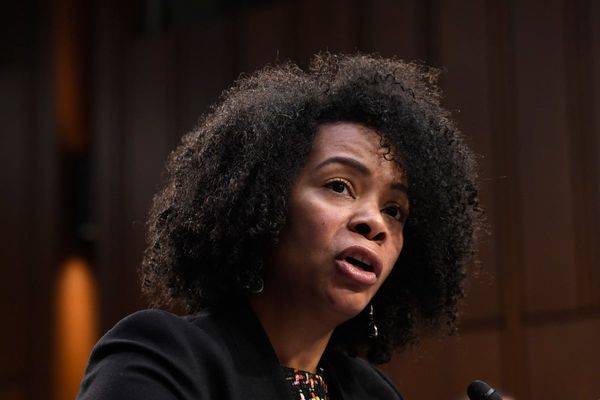
In a statement to the Conference on Disarmament on Oct. 14, Indian Ambassador Pankaj Sharma reiterated that—even as tensions with neighboring China heat up—his country remains committed to its doctrine that it will not use its nuclear weapons against an adversary unless first attacked with them.
India’s adherence to a no-first-use principle is long-standing. Ever since 1998, when the country went nuclear, New Delhi has rejected the idea of initiating the use of such weapons in any conflict scenario. Nukes, in Indian strategy, are purely retaliatory. And that stance has made good military and diplomatic sense. The relatively small size of India’s arsenal ruled out a first strike anyway, and the country’s commitment to restraint, meanwhile, built its image as a responsible nuclear stakeholder and helped ease New Delhi’s accommodation in the international nuclear order.
But India’s steadfast rhetorical adherence to its no-first-use principle has been facing challenges on multiple fronts.
First, there is a growing consensus in the Western nonproliferation community that, in practice, New Delhi has already nearly relinquished the policy. In fact, experts believe that should India and Pakistan go to war, India would ready its nuclear force for preemptive strikes. And it has acquired the capability—nuclear arsenal, delivery systems, and ISR (intelligence, surveillance, and reconnaissance) systems—to do so. Moreover, having already been granted recognition of its right to a nuclear program through the 2005 Indo-U.S. nuclear deal, New Delhi has less incentive for caution.
Second, China and India are embroiled in military scuffling in the Western Himalayas, where the Chinese army has sliced off significant chunks of Indian territory. Given the disparity between New Delhi’s conventional military power and Beijing’s, publicly adopting a first-use doctrine would communicate both power and resolve on India’s part. In other words, this would be an opportune time for India to align its stated policy with its apparent intentions.
Sharma’s message, though, amounts to a categorical rejection of both facts. The essential puzzle in India’s nuclear policy, therefore, boils down to the following: If Indian intentions and capability to initiate first use of nuclear weapons have indeed shifted, why is New Delhi hesitant about leveraging this shift where it may matter most—against China?
States do have an incentive to hide new military capabilities; the no-first-use doctrine may simply be a public lie to hide private intentions. However, backing away from the principle would also signal strength and perhaps make it less likely that India would need to use its new military capabilities to begin with.
Another explanation is that India doesn’t think it needs the added deterrence. So far, New Delhi has opted for a conventional buildup along the border with China. But that has put enormous strain on its underequipped and overstretched armed forces, as well as its underperforming economy. Diplomatically, too, building up conventional deterrence has been costly. Measures such as inviting Australia to joint naval exercises in Malabar and initiating official trade talks with Taiwan rattle Beijing, but not much more. Meanwhile, they entrap New Delhi into expensive commitments.
In reality, the reason New Delhi persists with the same old principles despite changing strategic conditions may be that Indian nuclear capabilities are not all that the assessments suggest. India remains fundamentally vulnerable. For a country facing two nuclear-armed adversaries—China and Pakistan, both of which have territorial aims against India and maintain a strategic alliance by targeting it—India’s nuclear arsenal remains relatively modest: 150 atomic warheads and perhaps 50-60 missiles. Any preemptive targeting of Pakistani atomic assets, for example, would consume most of that arsenal, leaving India utterly vulnerable to a Chinese strike. An attack on Pakistan would, meanwhile, free the Chinese from any moral compunctions against using nuclear weapons of its own even as it undermines India’s own moral authority.
In that way, relinquishing its no-first-use policy would actually exaggerate India’s nuclear dilemmas. There’s also the problem that its existing arsenal is not really suited to any of its tactical objectives. As the Indian national security expert Bharat Karnad has argued, the “only credible nuclear deterrent” in the case of an Indian-Chinese war on the Himalayan front, would be “atomic demolition munitions (ADMs) placed just behind the prepared defensive line along the likely ingress routes of the [Chinese military] in the mountain.” AMDs are nuclear land mines, whose tactical value in the rugged terrain of the Himalayas has been questioned by the Indian Army since the 1960s. Moreover, as the downstream nation, the environmental effects of nuclear use would be disastrous for India more than for China.
Efficiency notwithstanding, the problem of proportionality persists as well. No decision-maker in Beijing would believe a threat from New Delhi to use tactical nuclear weapons to deter salami-slicing of small portions of its territory. Beijing remains the overwhelmingly superior conventional and nuclear power.
To be sure, against the backdrop of Sino-Indian military tensions, calls in India for New Delhi to leverage its nukes for deterrence will grow. India has been here before: In the late 1960s, New Delhi considered using tactical nukes to outmatch China in the Himalayas. But under P.N. Haksar, the principal secretary to Prime Minister Indira Gandhi, the Department of Atomic Energy stood firm against the idea. “Every time a tactical exchange takes place,” it noted, “it invariably escalates to a strategic exchange as soon as one of the parties starts having the worst of tactical exchange.”
But P.N. Haksar, the principal secretary to Prime Minister Indira Gandhi, stood firm against the idea. “Every time a tactical exchange takes place,” he noted, “it invariably escalates to a strategic exchange as soon as one of the parties starts having the worst of tactical exchange.” Similar views seem to be shaping the thinking in New Delhi today.
It is worth believing Sharma’s statement at the Conference on Disarmament, then. India is wedded to its policy of no first use and opposed to nuclear war. India’s nuclear weapons have and will continue to remain weapons of last resort, meant to fulfil only one objective: deterring its adversaries from using nuclear weapons first.







